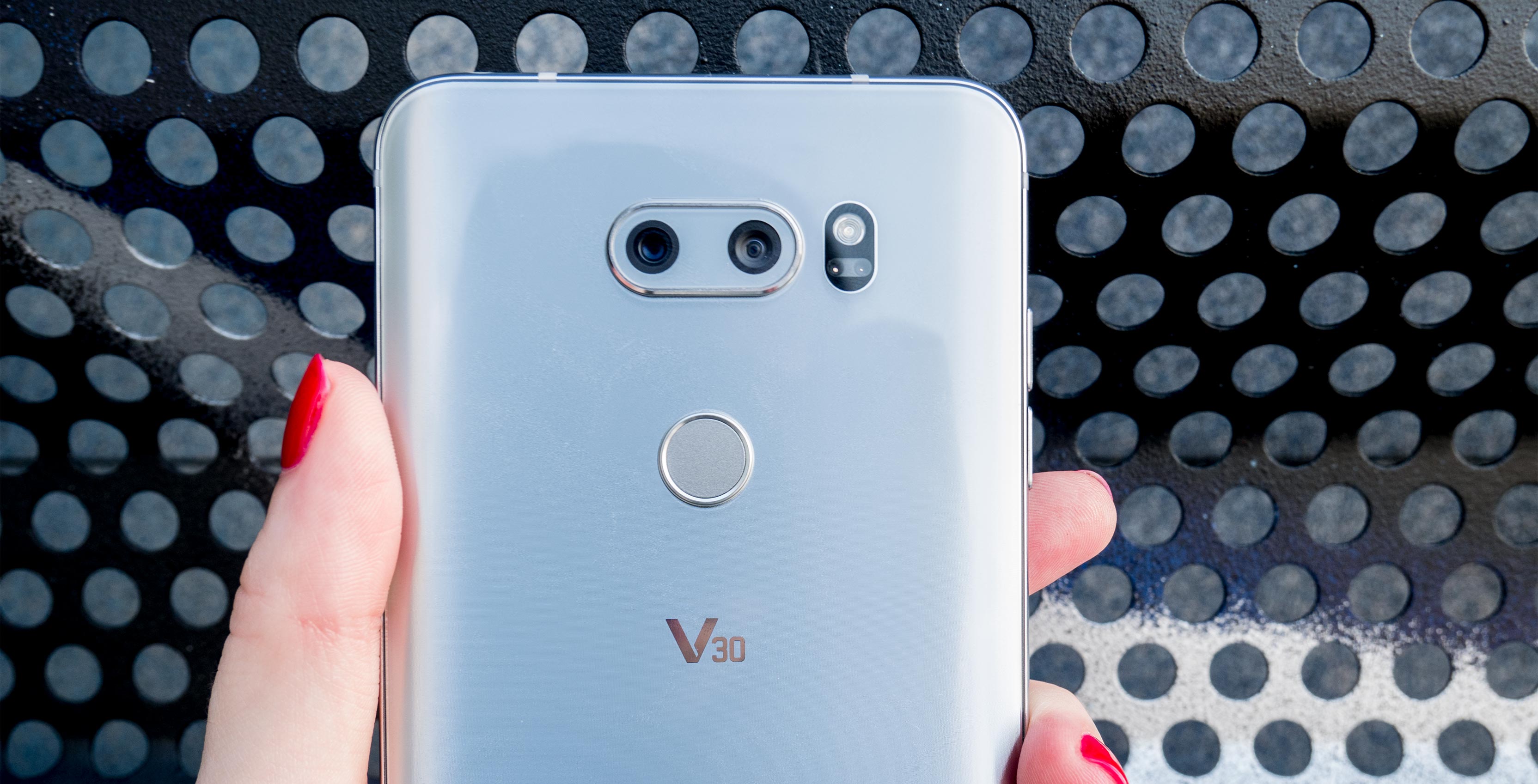
LG is pulling no punches with its latest premium phablet.
After steadily releasing eyebrow-raising tidbits over the course of the last few months, LG has fully revealed the V30 — and the details make clear just how steep the company’s ambitions are for its latest high-end device.
The V30’s powerhouse specs and features — like a f/1.6 aperture rear shooter and stackable biometric security — are inarguably industry leading. In comparison with Samsung’s redemption Note 8, which seemed to play it relatively safe this year, the V30’s distinguishing elements offer a more enticing overall package. It even looks and feels sleeker.
LG V30
LG G6
LG V20
Samsung Galaxy Note 8
Display
6.0-inch, Quad HD+ display, 2880 x 1440 pixels, 18:9 aspect ratio
5.7-inch, QHD+ display, 2880×1440, 18:9 aspect ratio
Main display 5.7 inches (1440x2560 pixels, 513 ppi); Secondary 2.1-inch IPS Quantum Display (160x1040)
6.3-inch, Super AMOLED display, 1440 x 2960 pixels, 18:5:9 aspect ratio, HDR 10
Processor
Snapdragon 835
Snapdragon 821
Qualcomm Snapdragon 820
Snapdragon 835 (Exynos 8895)
RAM
4GB of RAM
4GB of RAM
4GB
6GB RAM
Storage
64GB (expandable up to 2TB)
32GB (expandable up to 2TB)
64GB with microSD (up to 2TB)
64GB (expandable up to 256GB)
Dimensions (in.)
151.7 x 75.4 x 7.3mm
148.9 x 71.9 x 7.9mm
159.7 x 78.1 x 7.6 mm
162.5mm x 74.6mm x 8.5mm
Weight
158g
163g
174g
195g
Rear Facing Camera
16-megapixel (f/1.6, OIS) + 13-megapixel (f/1.9)
13-megapixel (f/1.8) +13-megapixel (f/2.4)
Dual 16-megapixel (29mm, f/1.8) + 8-megapixel (12mm, f/2.4), laser autofocus, OIS, LED flash
12-megapixel (f/1.7) + 12-megapixel (f.2.4, OIS, AF) dual-LED flash
Front Facing Camera
5-megapixel (f/2.2)
5-megapixel (f/2.2)
5-megapixel, f/1.9
8-Megapixel (f/1.7)
OS
Android 7.1.2 Nougat
Android 7.0 Nougat
Android 7.0 Nougat
Android 7.1 Nougat
Battery
3,300mAh
3,300mAh
3,200mAh replaceable battery
3,300mAh
Network Connectivity
GSM / HSPA / LTE
GSM/HSPA/LTE
LTE-A 3 Band CA
GSM / HSPA / LTE
Sensors
Fingerprint sensor, Barometer, Three-axis gyro, Accelerometer, Proximity sensor
Fingerprint (rear-mounted), accelerometer, gyro, proximity, compass, barometer, colour spectrum
Fingerprint (rear-mounted), accelerometer, gyro, proximity, compass, color spectrum
Iris scanner, fingerprint (rear-mounted), accelerometer, gyro, proximity, compass, barometer, heart rate, SpO2
SIM Type
Nano SIM
Nano SIM
nano SIM
Nano SIM
Launch Date
September 21, 2017
April 7, 2017
October 1, 2016
August 23, 2017
Misc
Colour: Cloud Silver | Bluetooth 5.0 BLE, NFC , USB Type-C 2.0 (3.1 compatible), IP68 water/dust resistant, 32-bit Hi-Fi Quad DAC, Daydream Certified
Colours: Ice Platinum |USB Type-C port, Headphone jack, IP68 certified water and dust resistant
Colour: Titan
Colours: Black, Blue | IP68 water/dust resistant, S-Pen, 18:9 aspect ratio, wireless charging, USB type C
Display
LG V30
6.0-inch, Quad HD+ display, 2880 x 1440 pixels, 18:9 aspect ratio
LG G6
5.7-inch, QHD+ display, 2880×1440, 18:9 aspect ratio
LG V20
Main display 5.7 inches (1440x2560 pixels, 513 ppi); Secondary 2.1-inch IPS Quantum Display (160x1040)
Samsung Galaxy Note 8
6.3-inch, Super AMOLED display, 1440 x 2960 pixels, 18:5:9 aspect ratio, HDR 10
Processor
LG V30
Snapdragon 835
LG G6
Snapdragon 821
LG V20
Qualcomm Snapdragon 820
Samsung Galaxy Note 8
Snapdragon 835 (Exynos 8895)
RAM
LG V30
4GB of RAM
LG G6
4GB of RAM
LG V20
4GB
Samsung Galaxy Note 8
6GB RAM
Storage
LG V30
64GB (expandable up to 2TB)
LG G6
32GB (expandable up to 2TB)
LG V20
64GB with microSD (up to 2TB)
Samsung Galaxy Note 8
64GB (expandable up to 256GB)
Dimensions (in.)
LG V30
151.7 x 75.4 x 7.3mm
LG G6
148.9 x 71.9 x 7.9mm
LG V20
159.7 x 78.1 x 7.6 mm
Samsung Galaxy Note 8
162.5mm x 74.6mm x 8.5mm
Weight
LG V30
158g
LG G6
163g
LG V20
174g
Samsung Galaxy Note 8
195g
Rear Facing Camera
LG V30
16-megapixel (f/1.6, OIS) + 13-megapixel (f/1.9)
LG G6
13-megapixel (f/1.8) +13-megapixel (f/2.4)
LG V20
Dual 16-megapixel (29mm, f/1.8) + 8-megapixel (12mm, f/2.4), laser autofocus, OIS, LED flash
Samsung Galaxy Note 8
12-megapixel (f/1.7) + 12-megapixel (f.2.4, OIS, AF) dual-LED flash
Front Facing Camera
LG V30
5-megapixel (f/2.2)
LG G6
5-megapixel (f/2.2)
LG V20
5-megapixel, f/1.9
Samsung Galaxy Note 8
8-Megapixel (f/1.7)
OS
LG V30
Android 7.1.2 Nougat
LG G6
Android 7.0 Nougat
LG V20
Android 7.0 Nougat
Samsung Galaxy Note 8
Android 7.1 Nougat
Battery
LG V30
3,300mAh
LG G6
3,300mAh
LG V20
3,200mAh replaceable battery
Samsung Galaxy Note 8
3,300mAh
Network Connectivity
LG V30
GSM / HSPA / LTE
LG G6
GSM/HSPA/LTE
LG V20
LTE-A 3 Band CA
Samsung Galaxy Note 8
GSM / HSPA / LTE
Sensors
LG V30
Fingerprint sensor, Barometer, Three-axis gyro, Accelerometer, Proximity sensor
LG G6
Fingerprint (rear-mounted), accelerometer, gyro, proximity, compass, barometer, colour spectrum
LG V20
Fingerprint (rear-mounted), accelerometer, gyro, proximity, compass, color spectrum
Samsung Galaxy Note 8
Iris scanner, fingerprint (rear-mounted), accelerometer, gyro, proximity, compass, barometer, heart rate, SpO2
SIM Type
LG V30
Nano SIM
LG G6
Nano SIM
LG V20
nano SIM
Samsung Galaxy Note 8
Nano SIM
Launch Date
LG V30
September 21, 2017
LG G6
April 7, 2017
LG V20
October 1, 2016
Samsung Galaxy Note 8
August 23, 2017
Misc
LG V30
Colour: Cloud Silver | Bluetooth 5.0 BLE, NFC , USB Type-C 2.0 (3.1 compatible), IP68 water/dust resistant, 32-bit Hi-Fi Quad DAC, Daydream Certified
LG G6
Colours: Ice Platinum |USB Type-C port, Headphone jack, IP68 certified water and dust resistant
LG V20
Colour: Titan
Samsung Galaxy Note 8
Colours: Black, Blue | IP68 water/dust resistant, S-Pen, 18:9 aspect ratio, wireless charging, USB type C
Whether it lives up to its own steadily-building hype is still unclear, however, and can only be accurately verified after spending some time with the market-ready device.
The success of the device also strongly depends on its competition yet to come, the upcoming iPhone and the second generation Google Pixel.
Regardless of external factors, though, the LG V30 has much to be proud of; it shed the clunkiness of the V20, let go of the gimmicky secondary screen and capitalized on its multi-media strengths.
Additionally, with a Snapdragon 835 processor, plastic OLED screen and IP68 water resistance, it features top-end specs that secure its position as a serious contender.
Gorgeous yet simple design
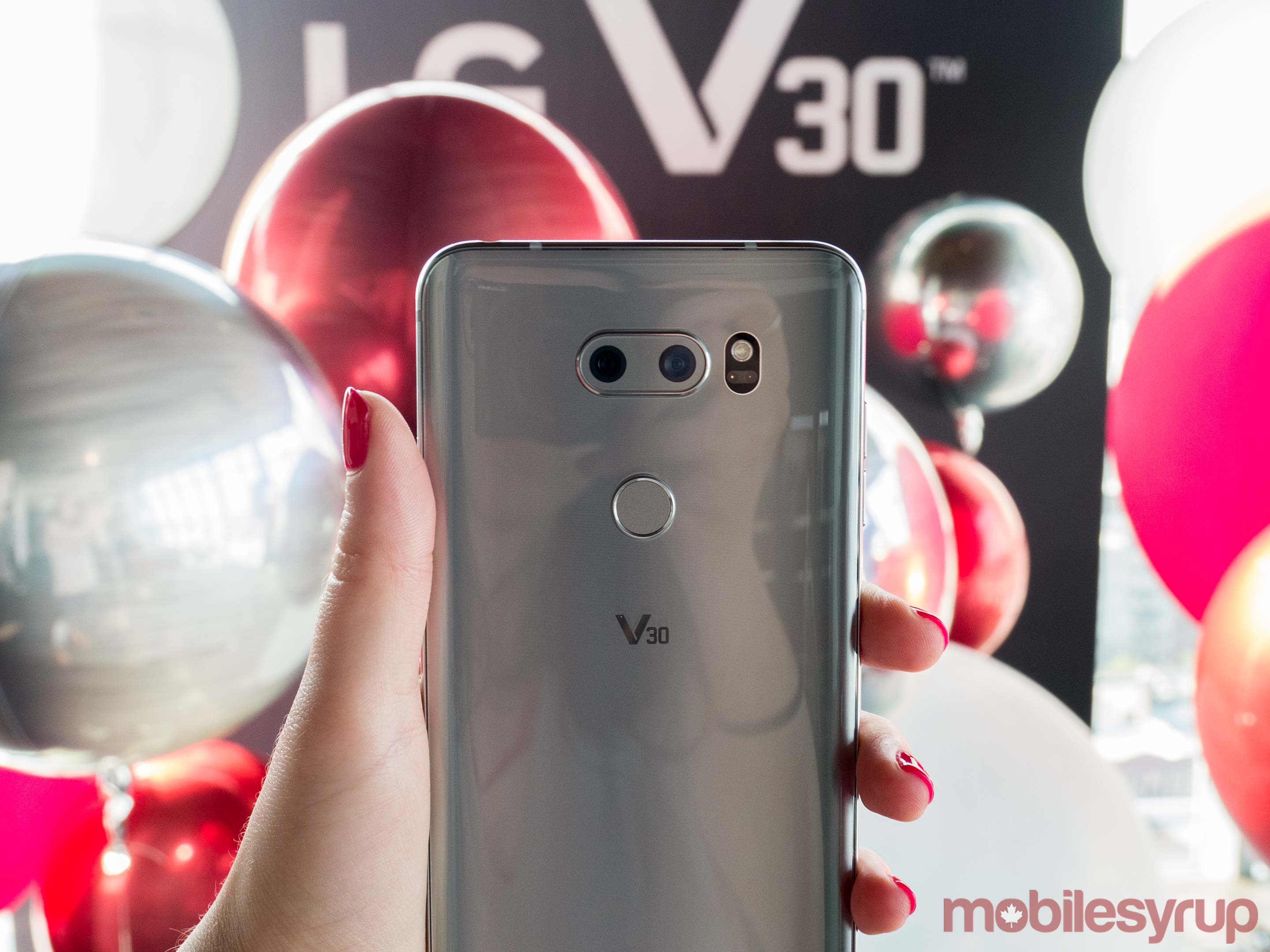
The V30’s sleek and elegant style is a departure from its predecessor, the V20, but falls very much inline with the LG G6’s aesthetic, a winning look that’s minimal with subtle flash and soft lines.
Like the G6, the device appears metallic but in fact features a glass back, allowing for wireless charging through both the Qi or PMA standards.
It does, however, feature metal sides. On the left-hand side is a volume rocker, while the top stocks a headphone jack and the bottom a speaker grille, mic hole and USB-C charging slot.
The only other external speaker is situated at the top of the device’s front, embedded in the device’s uber-thin, rounded bezel – the latter of which gives the phone a very different look from the V20, which had larger, blocky bezels.
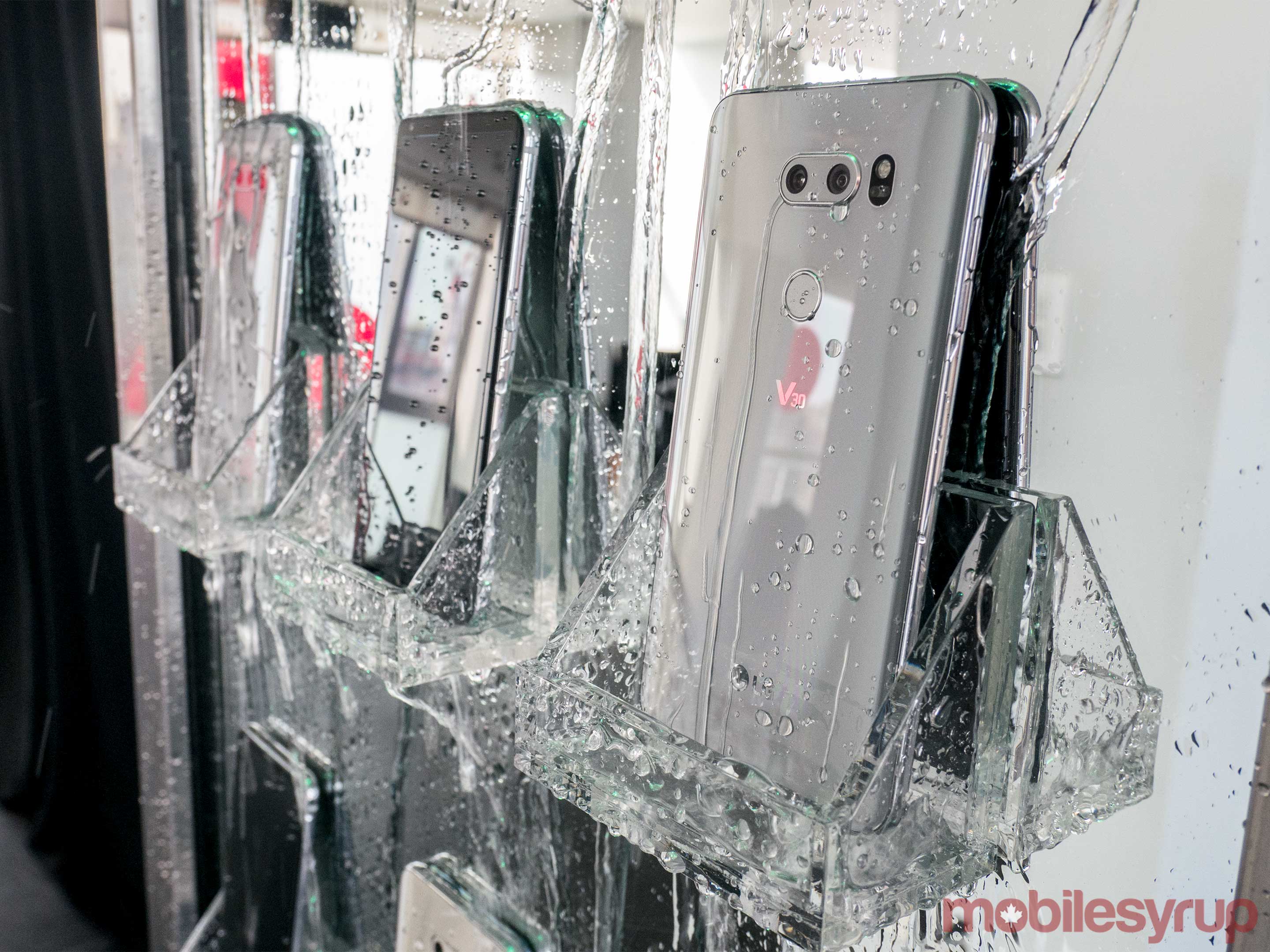
The V30 further deviates from the V20 by decreasing bulk, making it much easier to handle. Whereas the V20 was too large for me to comfortably manipulate with one hand hold and fell on the heavier side of the smartphone spectrum, the V30 is light and easy to grip.
At 158 grams, the handset is lighter not only than the 174-gram V20, but also the G6, the recently-released Essential Phone, the Samsung Galaxy S8+ and the Note 8, which comes in at a paperweight-like 195 grams.
In fact, the V30 is only slightly heavier than the 153-gram OnePlus 5, even though it has a 6-inch screen in comparison to the latter’s 5.5-inch display. The smartphone, which features dimensions of 151.7mm x 75.4mm x 7.3mm, is also the same thickness as the OnePlus 5, and thinner than the rest of its aforementioned competitors.
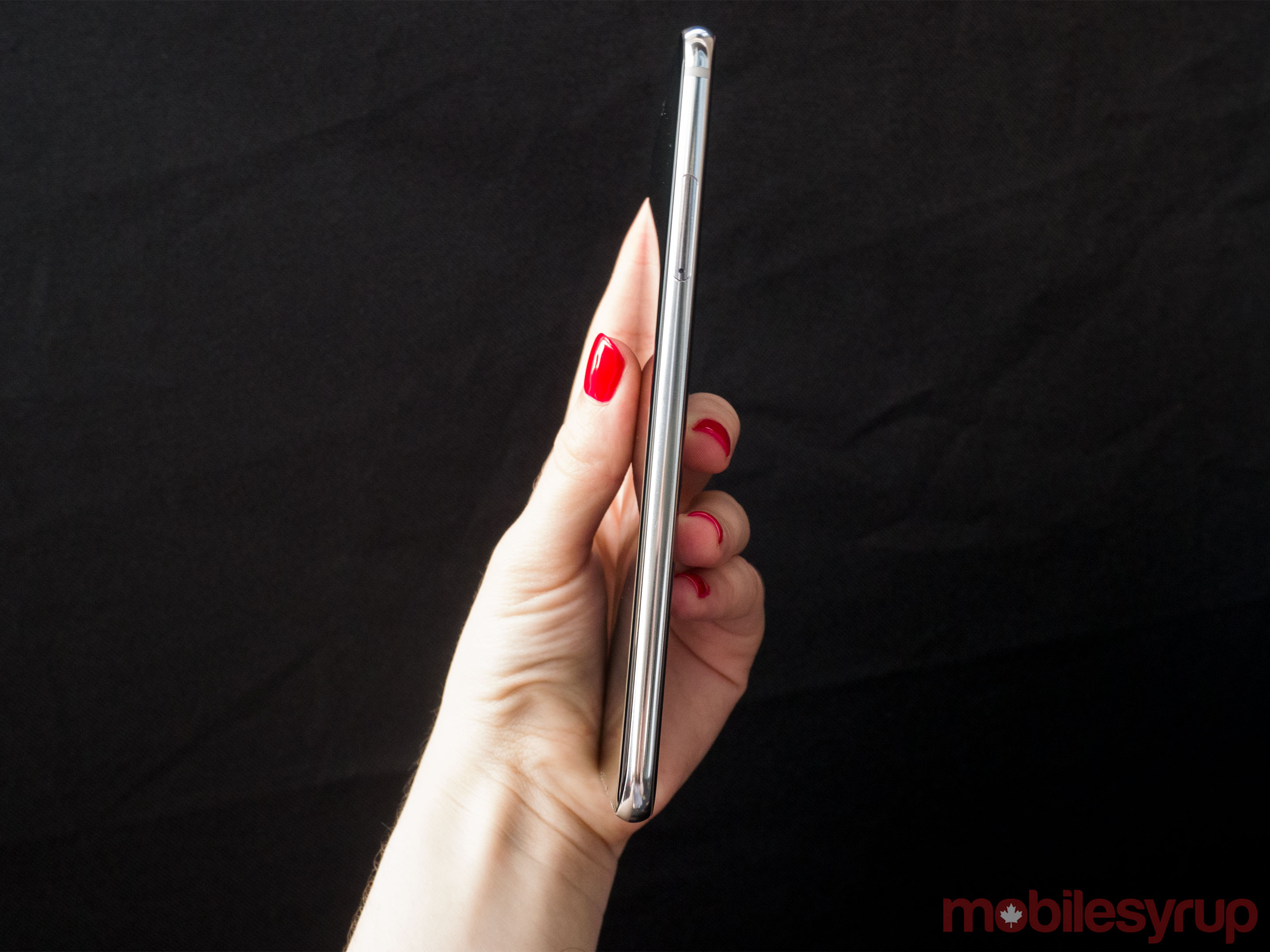
Despite having an 18:9 display aspect ratio, it doesn’t have quite the same tall slimness that now characterizes many high-end Androids, however.
It’s shorter than all of the competitors I’ve listed, excepting the Essential Phone and G6, and wider than all of them, too – though still reduced from its hand-busting predecessor.
LG has also kept the fingerprint sensor situated under the camera sensors on the rear of the phone, which, though not my preference, is appealing next to the awkward placement of the fingerprint sensor directly next to the camera sensors on the S8+ and Note 8.
Topping it off, the V30 is rated IP68 for water and dust resistance, which the company demonstrated by placing its phones in a gently flowing water feature during its New York City press briefing.
This marks a departure from last year’s V20, which had a removable backplate and was not water resistant. To some, the fact that users can no longer swap out batteries isn’t worth the added durability, but I think it’s an intelligent trade-off; the public is increasingly demanding water resistance from high-end devices. To most, the fear of water damage outweighs the fear of gradual battery degradation.
Speaking of battery, the V30 stocks a 3,300mAh power cell with Qualcomm Quick Charge 3, which comes in just a little above most predictions. The battery size outpaces the V20 and the Essential Phone and matches the Note 8, OnePlus5 and G6. It’s a bit under the S8+’s 3,500mAh battery, however.
A brilliant, expansive display
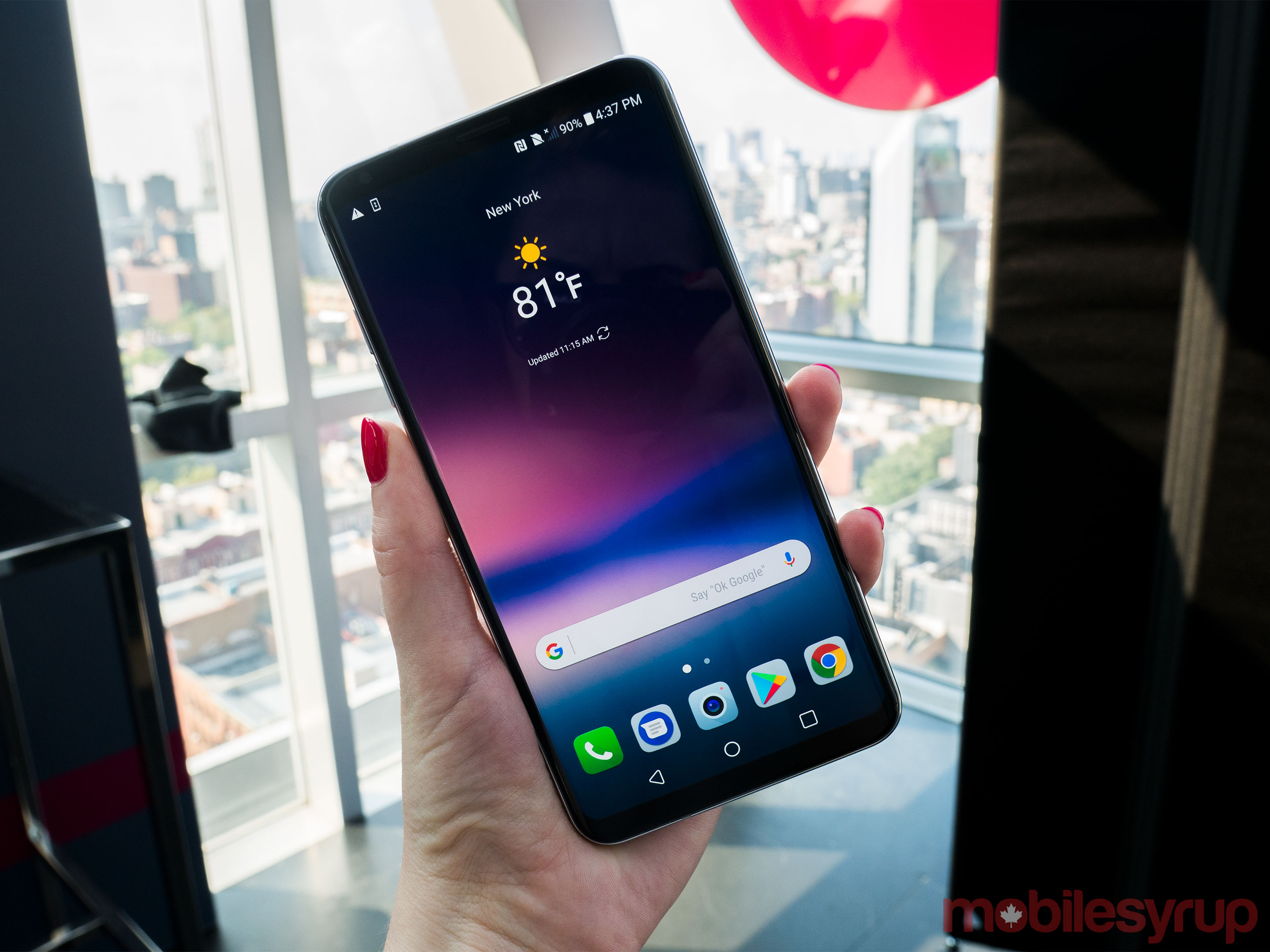
Within its miniscule bezels lies the V30’s 6-inch 18:9 Quad HD+ 2880 x 1440 FullVision Plastic OLED display.
POLED is another notable change for LG, as both the G6 and V20 used IPS LCD displays. The change is at least partially explained by the V30’s Google Daydream certification, since OLED panels offer a lower latency desirable for virtual reality.
In my brief time with the device, I was impressed by the display’s vibrant colours – LG notes that it uses 148 percent of the sRGB colour space for digital images – and its sheer expansiveness. Slim bezels provide a stunning user experience, particularly when it comes to using the camera and watching video.
LG aims to push the viewing experience even further, in fact, by offering different display modes for the type of content being watched, as part of the LG UX 6.0+ Android skin that comes with the V30. It’s also legible in direct sunlight, rectifying an issue I’ve previously encountered with LG phones.
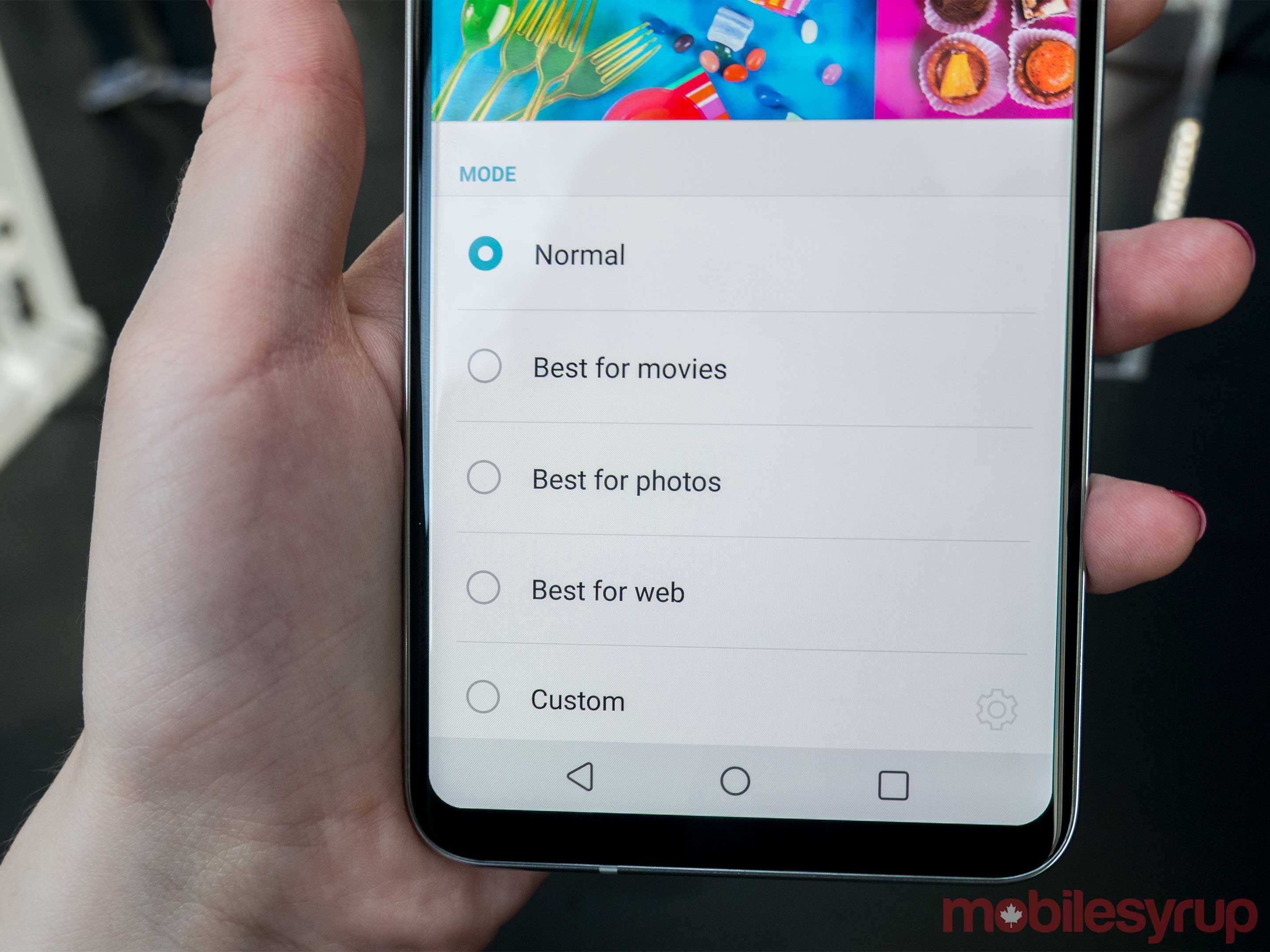
While the smartphone did drop arguably its most distinctive feature from the V20 — the always-on secondary screen that ran along the top of the device and held apps, quick tools and rolling notifications – the V30’s display remains one of its design high-points.
Its 82 percent screen to body ratio is visually arresting, from its size and vibrancy to the taper of its 3D rounded Gorilla Glass 5. During my time with it, I found it one of the most gorgeous displays I’ve ever seen on a smartphone.
LG’s new UX 6.0+ features
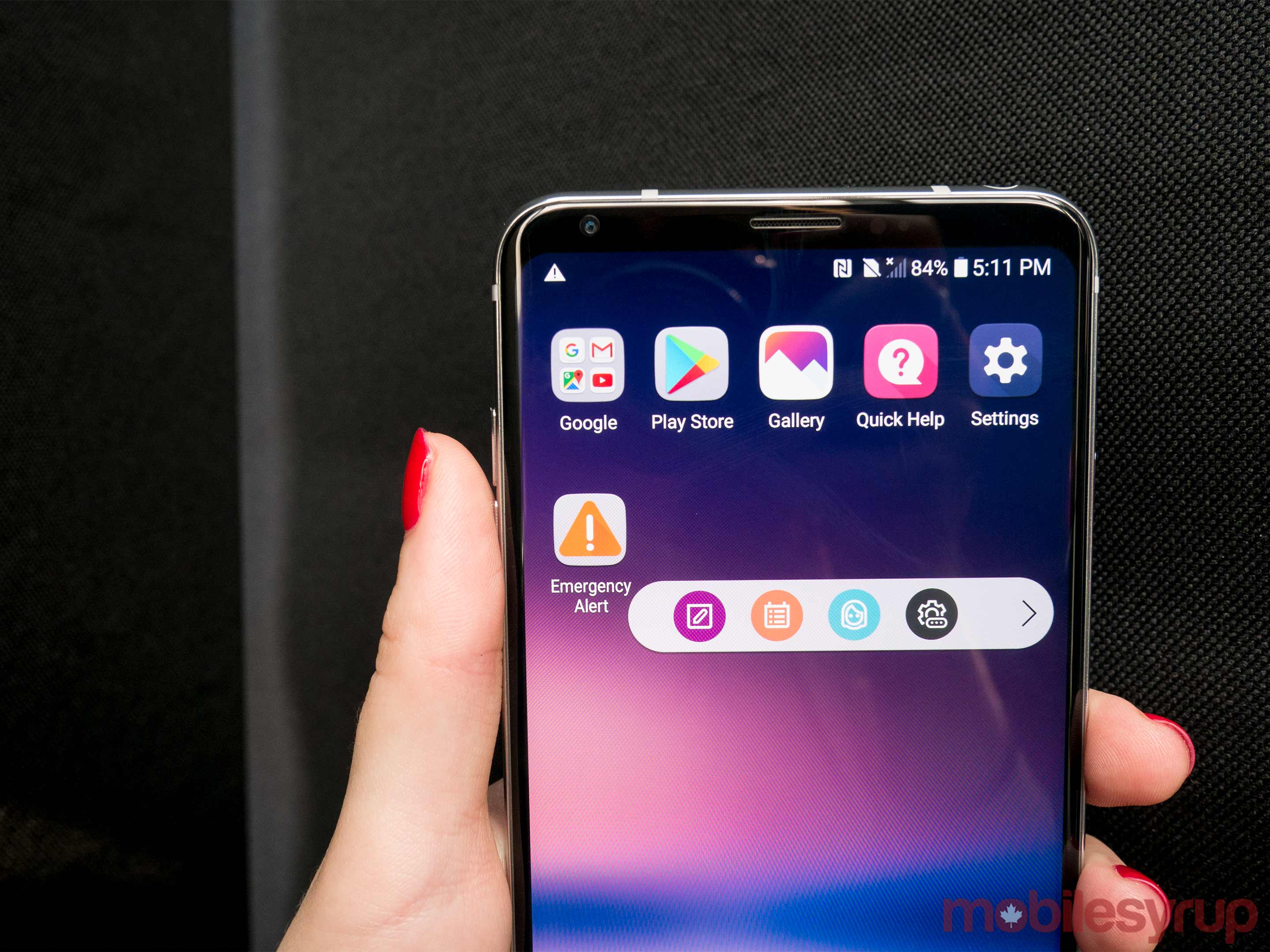
LG’s new 6.0+ skin — which runs over the slightly outdated Android version Nougat 7.1.2 — is still far from stock Android, eschewing pleasantly familiar features like the Pixel Launcher and Google Now positioned next to the home screen.
However, I’ve never been more intrigued by its additional software offerings, many of which seem to really complement Android offerings.
For instance, there’s the new option to use facial and voice recognition to unlock your phone, which the company notes you can use in addition to the fingerprint sensor – there’s no need to choose between the three. I wasn’t able to fully check out this feature, but it’ll be exceedingly useful if implemented well.
LG also notes that since its user voice recognition is enhanced, Google Assistant will be easier to use. There are even some V30-specific commands, including: “Record a video/take a selfie in wide angle,” and “Open camera in manual mode.”
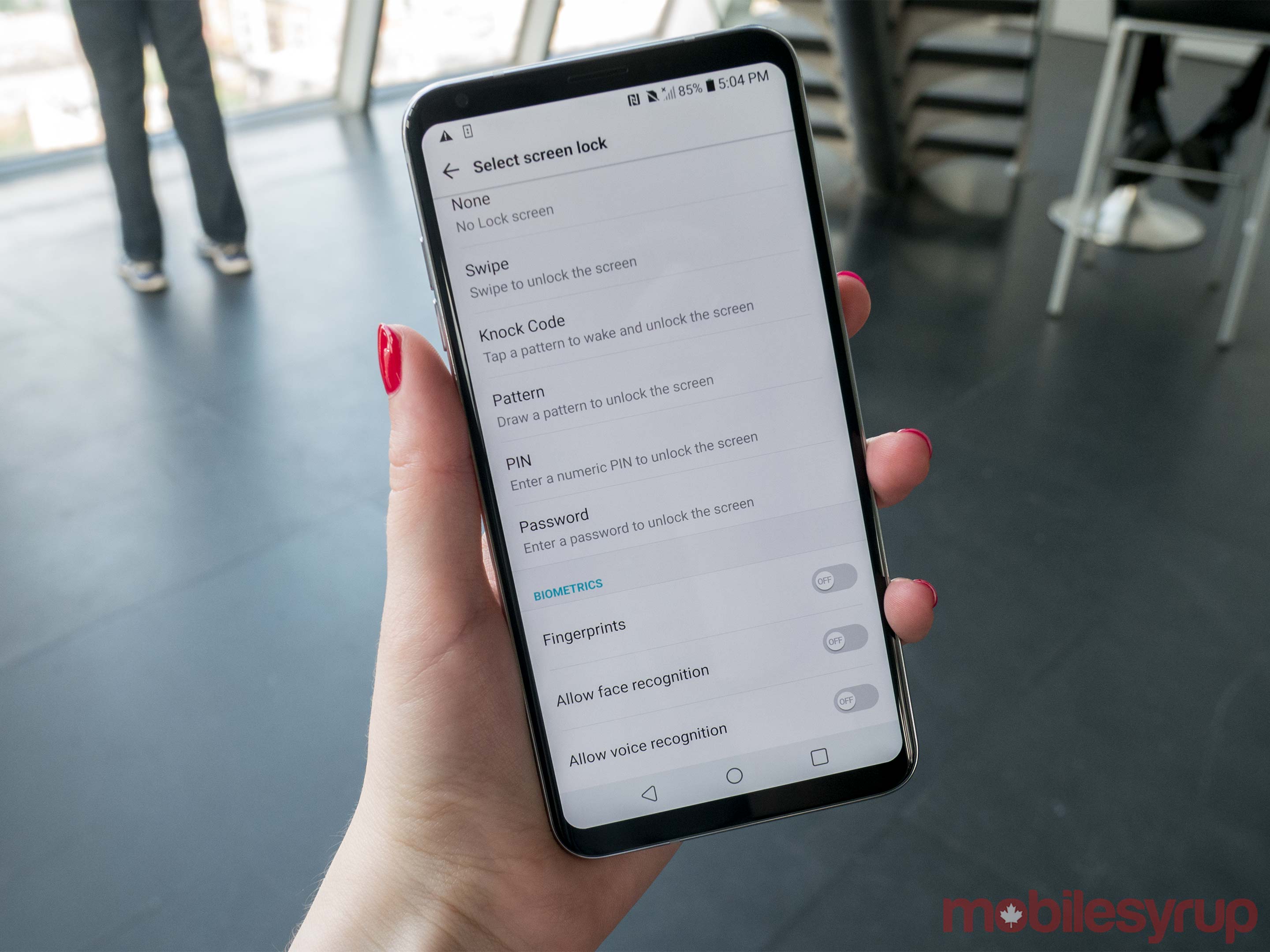
As for the floating bar that replaced the secondary screen, it offers plenty of functions and is thoughtfully designed for what could be a potentially annoying feature. After enabling the bar, you can drag it anywhere you’d like on the screen or minimize it and shift the small tab to any position on either edge.
It’s customizable and features app shortcuts, capture tools (including for GIFs), music player tools, quick contacts and incoming call notifications.
The always-on display feature, meanwhile, has shifted downward to the now singular main display — a position I like better for its larger size in comparison to the secondary screen — and is customizable with quick tools and photographs, among other things.
A competitive processor
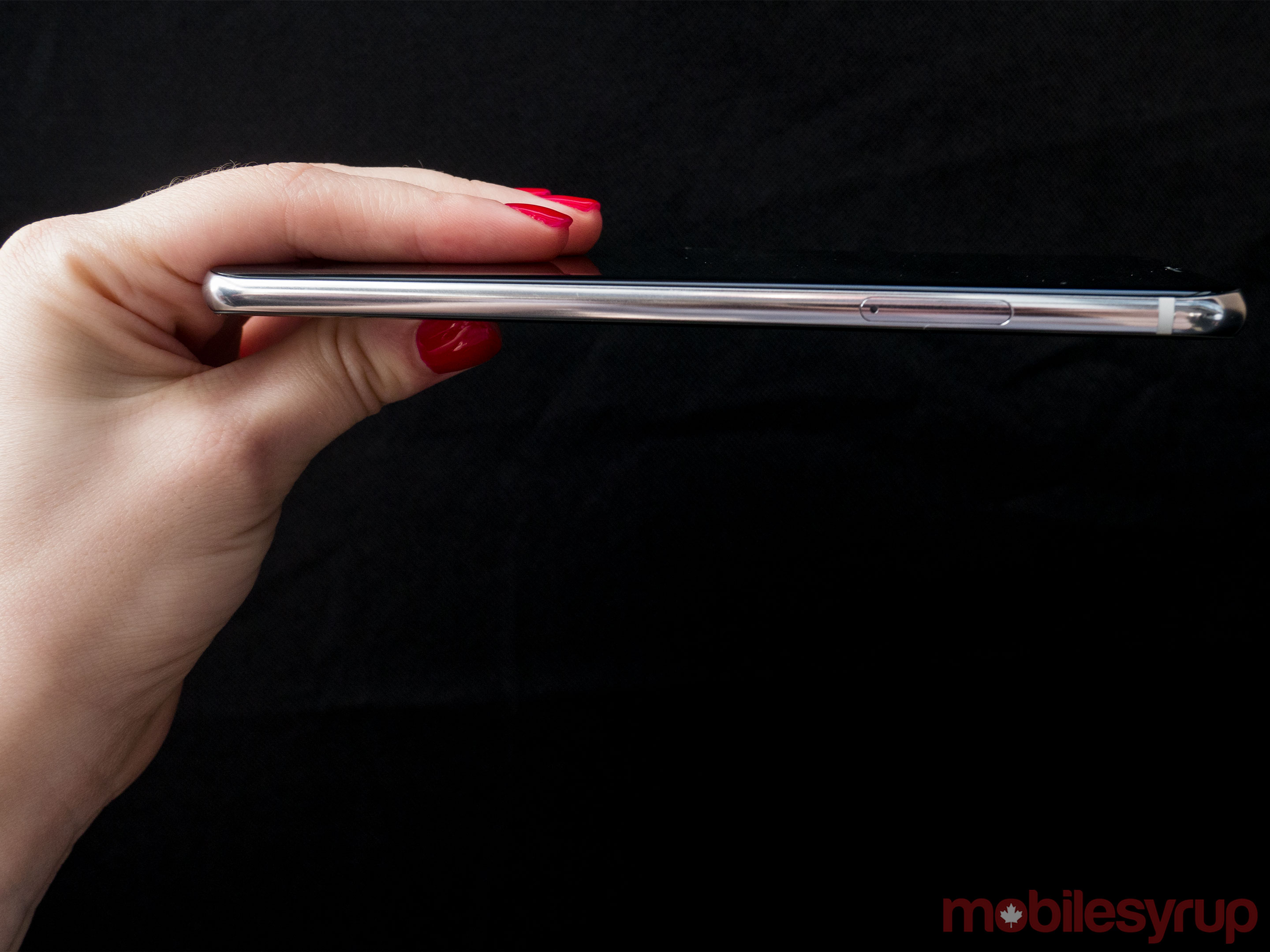
Unlike the LG G6, which caught flack for stocking a slightly outdated Qualcomm chipset — the Snapdragon 821 — the V30 has Qualcomm’s current flagship platform, the octa-core Snapdragon 835. This puts it on par with the Note 8, S8+ OnePlus 5 and Essential, though many of its competitors have more impressive memory configurations.
While the V30 has 4GB of RAM and 64GB or 128GB of internal storage depending on variant, with SDXC memory expandable up to 2TB, the Note 8 has 6GB of RAM and 64GB, 128GB or 256GB of internal storage.
The OnePlus 5, meanwhile, has either 6GB RAM and 64GB of internal storage or 8GB of RAM and 128GB of internal storage.
The Essential Phone and S8+ are similar to the V30, however, with the former stocking 4GB of RAM and 128GB of internal storage and the latter featuring either 4GB of RAM and 64GB of storage or 6GB of RAM and 128GB of storage.
The device hummed along perfectly during my time with it, though further use is necessary before passing any judgments.
Camera specs that stand out
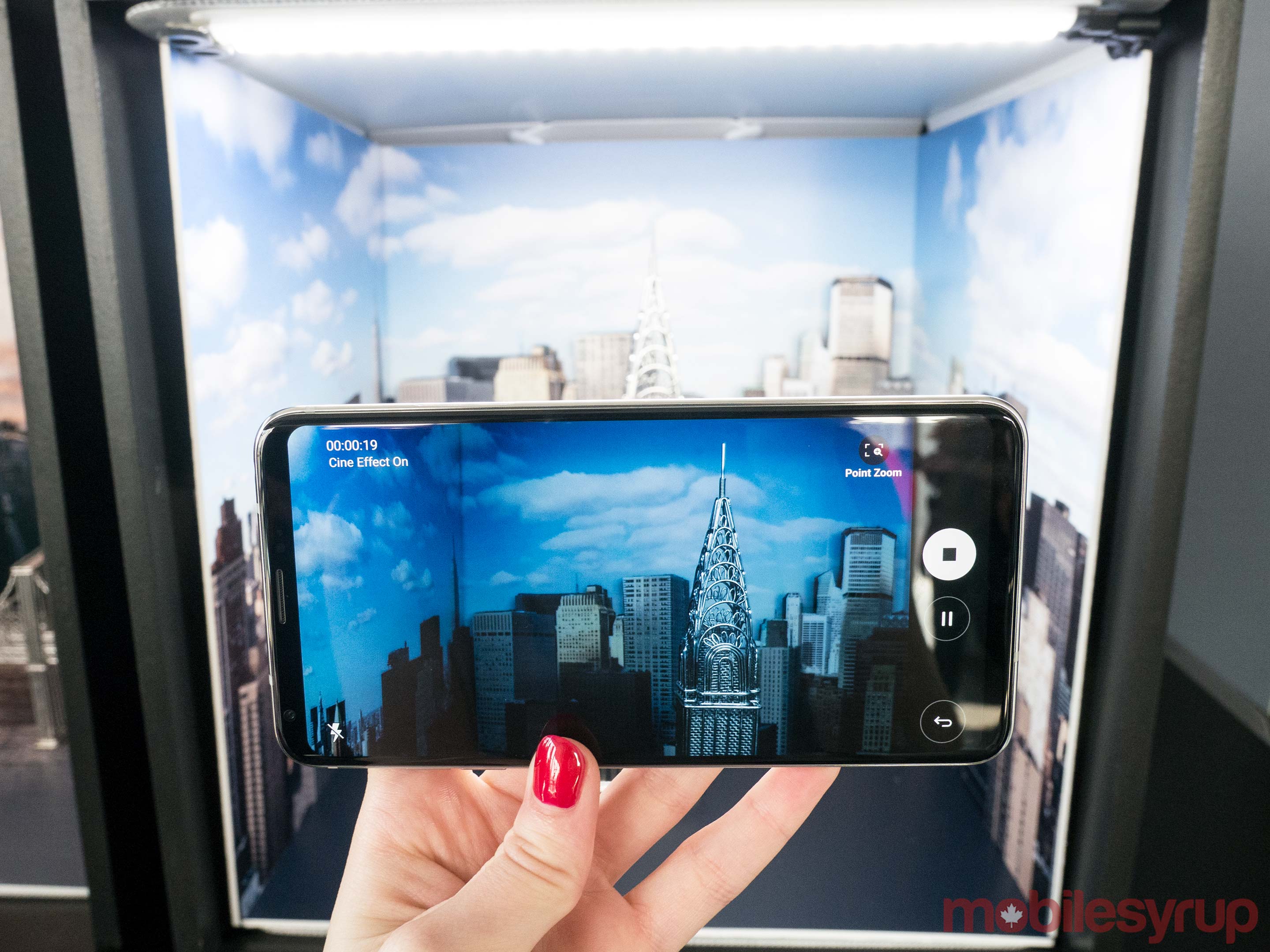
At the heart of the V30 is its camera setup, and LG has cut no corners in making it a compelling package.
Hardware-wise, the device features a 71-degree 16-megapixel and 120-degree 13-megapixel rear dual camera coupling. The 16-megapixel sensor features an f/1.6 aperture, currently the smallest on any flagship camera. This is improved from a 13-megapixel sensor and f/1.8 aperture on the V20.
The 13-megapixel sensor, meanwhile, has a f/1.9 aperture — previously a f/2.4 aperture on the V20.
With apertures, the smaller the number the wider the aperture, and the wider the aperture the more light it captures, which is ideal for low-light or night shooting.
The V30’s camera setup also features both optical image stabilization and electric image stabilization and laser detection autofocus.
Additionally, LG touted its new ‘Crystal Clear Lens’ – the difference from other setups being that the camera’s sixth and final layer of lens is glass, which benefits light collection and supposedly helps with better colour reproduction.
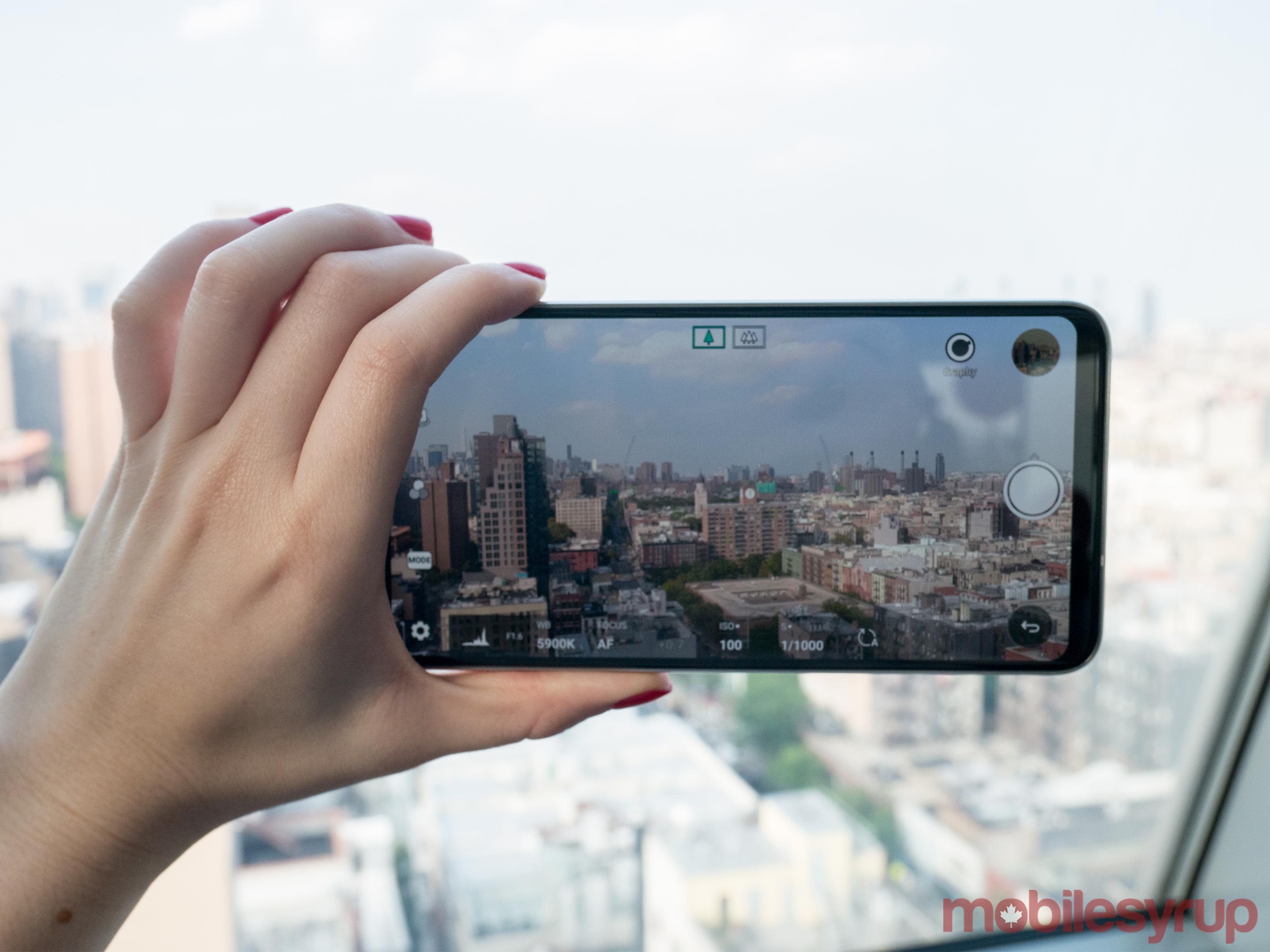
A lack of vibrancy and saturation was one of the main issues I’ve had with LG’s cameras in the past, so it’s compelling to see the company striving hard to improve. The pictures I snapped during my hands-on did indeed look richly coloured, though I wasn’t able to take any shots that showed its low-light capabilities well.
One thing I could tell, however, was the company’s improvement of wide-angle shots. LG promised it had reduced edge distortion and, indeed, the photos I snapped lacked most of the fish-eye effect that detracted from wide-angle shots taken by the V20.
Additionally, LG’s UX 6.0+ added some very engaging photo software. Even though I’m not usually one to dabble in all of a camera’s different modes, I found myself loving the ‘Cine Video’ effects, which allow for noir lighting in the middle of the day, or a variety of other colourized themes.
Another feature, ‘Point Zoom’ allows users to identify a target in a video and zoom smoothly towards it at a controllable speed — perfect for comedic effect.
‘Graphy’ was also interesting, letting users import manual camera settings from mobile pictures taken by pros — though the settings seemed to require ideal matching lighting to that shown in the pictures, or the results came out underwhelming.
Around the front is a 90-degree 5-megapixel selfie camera with a f/2.2 aperture that shot well and features LG’s handy fist trigger function for super-casual looking self-portraits.
Building on audio greatness
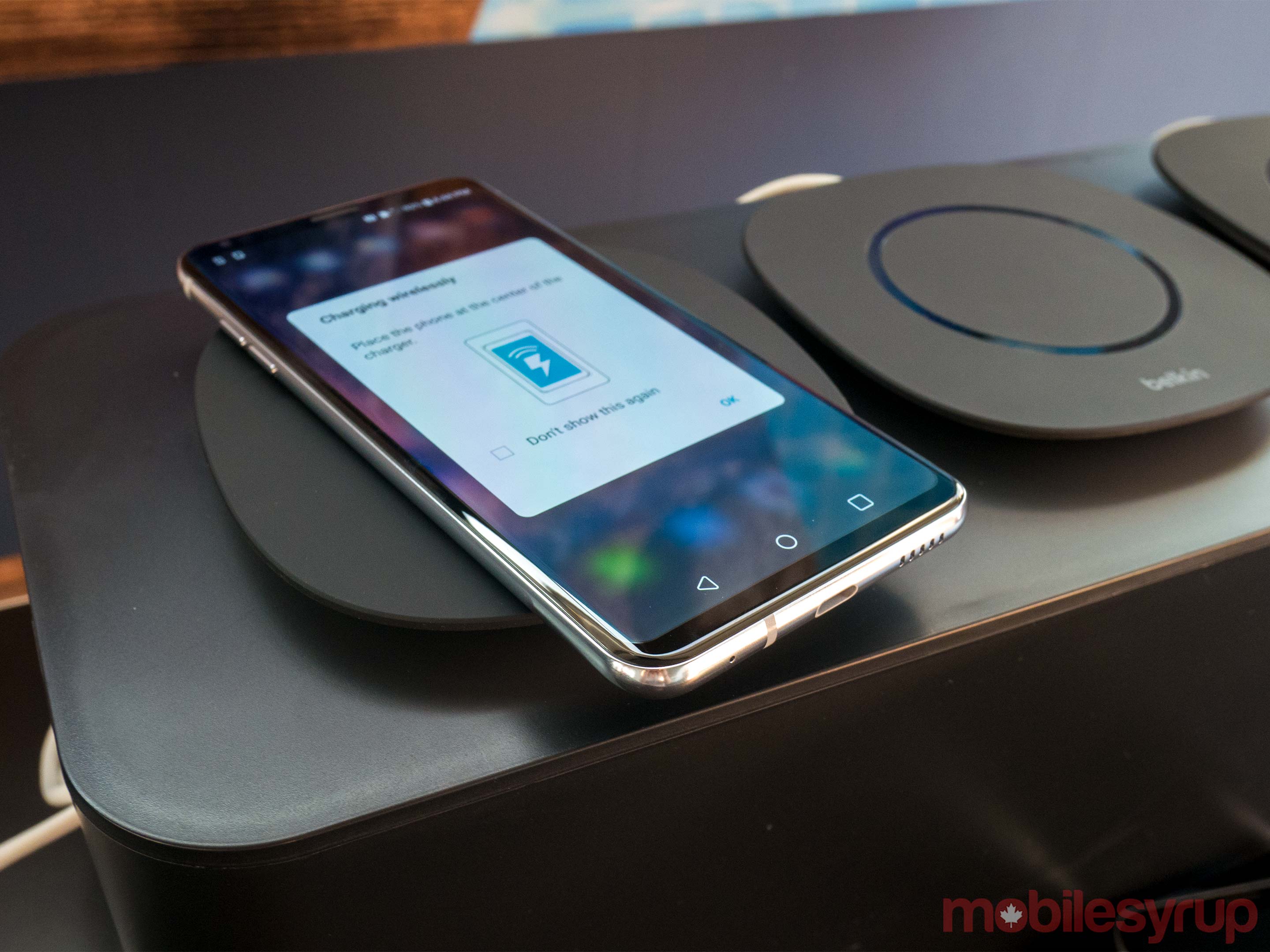
The LG V20 and V10 were both known for their audio prowess, and the V30 aims to remain one of the best audio experiences in the high-end smartphone market.
The V30 will include the same high-fidelity (Hi-Fi) Quad digital to analog converter (DAC) that was first introduced with the V20, with a few key upgrades. The handset contains a 32-bit Advanced Hi-Fi Quad DAC powered by ESS Technology’s SABRE ES9218P, and brings along two new features: digital filters and sound presets.
Both allow for more customization of sound. Digital filters, say LG, improve ‘pre- and post-ringing of the impulse’ response with customizable filters. Additionally, LG created four pre-programmed settings for audio: enhanced, detailed, live and bass – which can be used depending on the user’s preference.
In testing out the V30’s sound, I found it to be crisply detailed, with each instrument in the trial song sounding unique and unmerged with the others.
With more flagships yet to come and many features to test further, it’s difficult to say whether the V30 will turn into a hit for the company – but at first glance, the phone’s extensive laundry list of high-end specs and unique features make it a serious contender in the market.
Update 01/09/17: LG has updated MobileSyrup that “due to licensing restrictions, LG Canada will not be offering B&O headphones with the LG V30.” The article has been updated to reflect that fact.
MobileSyrup may earn a commission from purchases made via our links, which helps fund the journalism we provide free on our website. These links do not influence our editorial content. Support us here.


